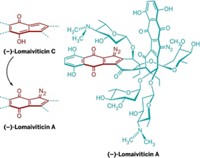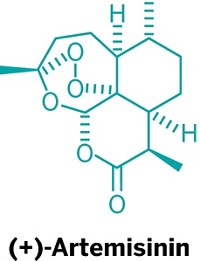Advertisement
Grab your lab coat. Let's get started
Welcome!
Welcome!
Create an account below to get 6 C&EN articles per month, receive newsletters and more - all free.
It seems this is your first time logging in online. Please enter the following information to continue.
As an ACS member you automatically get access to this site. All we need is few more details to create your reading experience.
Not you? Sign in with a different account.
Not you? Sign in with a different account.
ERROR 1
ERROR 1
ERROR 2
ERROR 2
ERROR 2
ERROR 2
ERROR 2
Password and Confirm password must match.
If you have an ACS member number, please enter it here so we can link this account to your membership. (optional)
ERROR 2
ACS values your privacy. By submitting your information, you are gaining access to C&EN and subscribing to our weekly newsletter. We use the information you provide to make your reading experience better, and we will never sell your data to third party members.
Medicinal Chemistry
Chemists find path to potent anticancer compound
Total synthesis of ritterazine B gives enough to study the molecule’s drug potential
by Leigh Krietsch Boerner
March 16, 2021

Ritterazine B, found in sea squirts, belongs to the class of compounds known as bis-steroidal pyrazines. This group has stronger anticancer activity than any other known natural products. But scientists haven’t been able to gather enough ritterazine B to fully study its potential as a drug; the compound is made in very small amounts, possibly by a symbiotic organism that lives on sea squirts and is difficult to culture in a lab. Sarah Reisman and coworkers at the California Institute of Technology now report the first total synthesis of ritterazine B, producing the cytotoxic compound in large enough quantities to begin studies into developing the compound as a drug (J. Am. Chem. Soc. 2021, DOI: 10.1021/jacs.1c01372).
The team started with a cheap, commercially available steroid. The pseudo-symmetry of ritterazine B (shown) simplified the synthesis a little, Reisman says. “We really only had to develop one strategy” to build both ends of the molecule, she says. “Then we could make modifications as needed” to the parts of the structure that differ at the two ends.
With their new synthesis, Reisman and her team have made milligram quantities, more than anyone has isolated before. Ritterazine B is so potent that this scale should be sufficient, Reisman says. Her group has sent a few milligrams to collaborators for their initial bioactivity experiments, and it’s more than enough. Even for subsequent studies, the team could easily supply tens to hundreds of milligrams, she says.
It was impressive that this extremely complex organic structure could be synthesized from a readily available precursor, says Isaac Garcia-Bosch, an inorganic chemist at Southern Methodist university, who developed some of the catalysts that Reisman’s team used in this total synthesis and who was not involved in the study. “This paper is a clear example of organic and inorganic chemists learning from each other and how important it is to cross disciplines to advance the science,” he says.
CORRECTION
This story was updated on March 17, 2021, to correct a statement about the production of ritterazine B by a symbiotic organism on sea squirts. Not all evidence supports that the compound is made by a symbiotic organism; this is only a possibility.





Join the conversation
Contact the reporter
Submit a Letter to the Editor for publication
Engage with us on Twitter